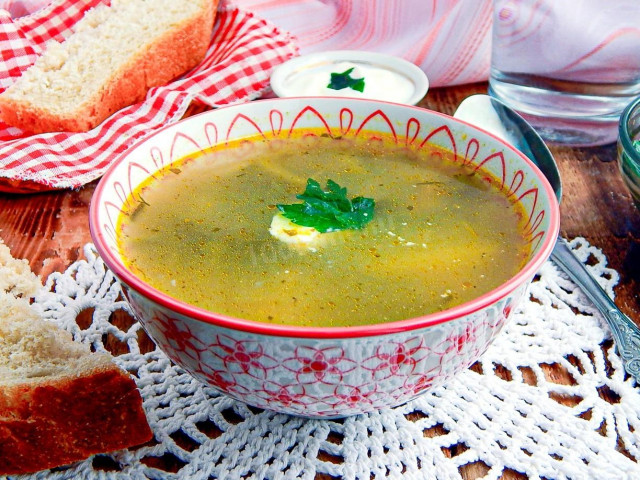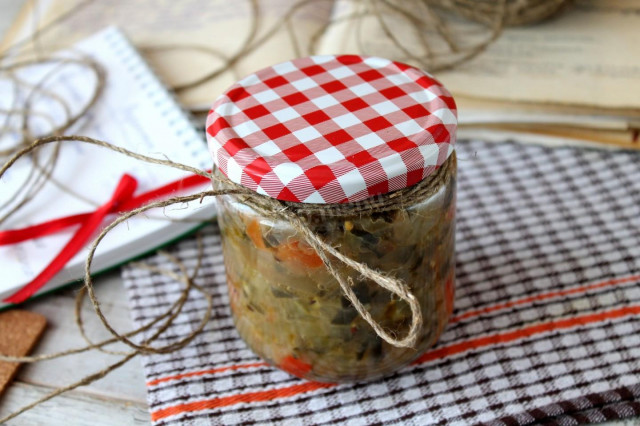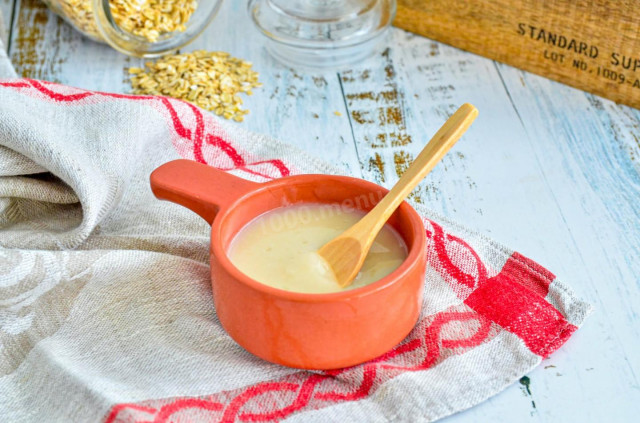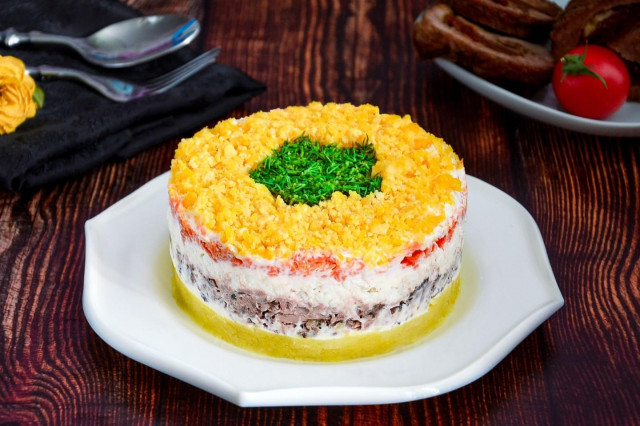Composition / ingredients
Step-by-step cooking
Step 1:
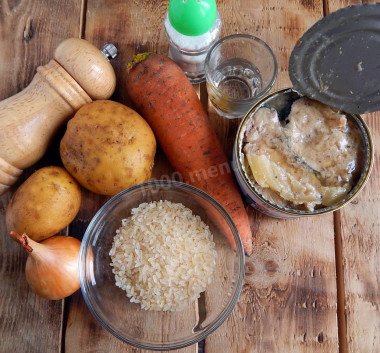
How to cook fish soup from canned mackerel? Prepare the products. Take the mackerel in its own juice, without oil, so that the soup does not come out very greasy. Pre-wash the vegetables. Rice is suitable for any variety — round, long, and steamed.
Step 2:
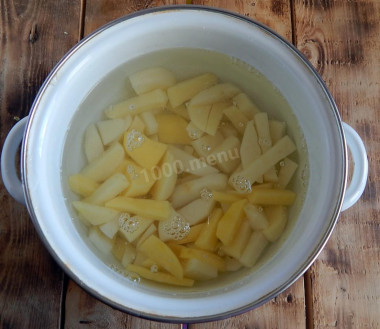
Peel and cut the potatoes into strips, then rinse again to remove excess starch from the vegetable. Put the potatoes in a saucepan, fill it with cold filtered water. Put it on the fire. Bring the water to a boil, reduce the heat and leave the potatoes to cook for 10 minutes.
Step 3:
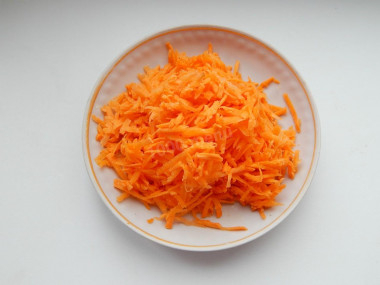
Peel and grate the carrots on a coarse grater. Or cut it into cubes, straws, as you like.
Step 4:
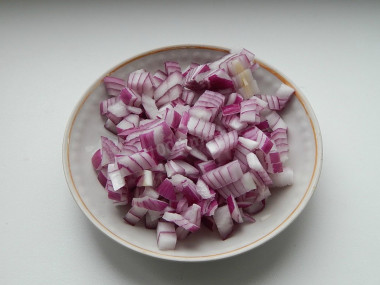
Peel the onion and finely chop it with a knife.
Step 5:
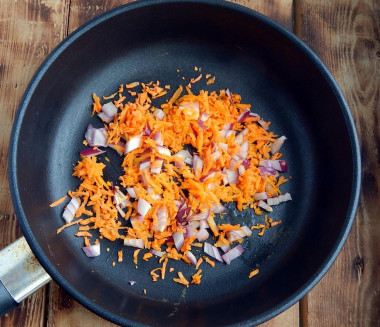
Prepare a roast for the soup. How to make a roast? Pour vegetable oil into the pan. Put it on the fire. Put grated carrots and chopped onions in a frying pan. Fry the vegetables over medium heat, stirring occasionally with a spatula, until the carrots are soft and the onions are transparent.
Step 6:
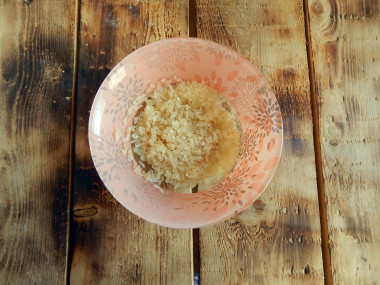
Rice (I have long grain) rinse thoroughly, repeatedly changing the water.
Step 7:
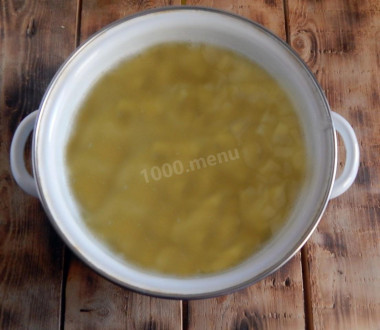
Throw the grits into a saucepan with potatoes, stir, let the water boil again. Then reduce the heat to medium and cook for about 10 minutes.
Step 8:
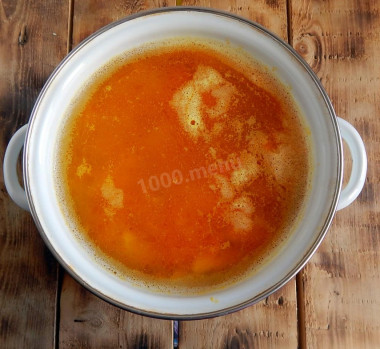
Then put the vegetable roast in a saucepan with potatoes and rice. Stir and boil the soup for about 5 more minutes. Open a jar of canned fish, mash the mackerel with a fork along with the marinade, leaving some of the pieces intact.
Step 9:
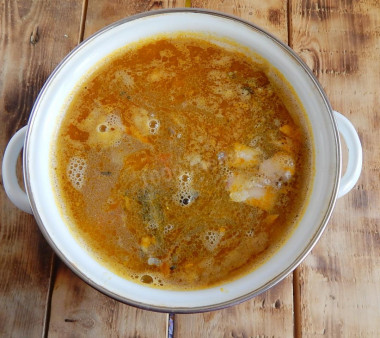
Put the canned fish in the soup. Stir, add salt to taste (keep in mind that the canned food also contains salt), black pepper and bay leaf. Let the soup boil and keep it on the fire for another 5 minutes. Turn off the heat and leave the soup to brew under the lid. Serve the canned mackerel soup to the table, sprinkling it with herbs. Bon appetit!
Mackerel is a very healthy fish, it is rich in protein, minerals, B12 vitamins. Cooking fresh fish dishes naturally requires effort and time. Therefore, sometimes canned fish can be eaten, some of the nutrients are also preserved in it.
Important! Regardless of whether the amount of water for soup is indicated in the recipe or not, it is best to focus on your own preferences (thick or more liquid soup you like), as well as on the size of your pan and the products taken for cooking. Do not forget that the author has his own view on the amount of meat, potatoes, cereals and other ingredients in the soup, which may not coincide with yours. In practice, this means that if you are cooking for the first time, you should not cook a whole pot at once. Make a soup for tasting - for one or two people. To do this, reduce the amount of all ingredients according to the recipe to 1-2 servings, and take the amount of water from the calculation: from one cup per serving - if the soup is very thick, to 1.5-2 cups - if more liquid. Do not forget to take into account that part of the liquid will boil off during the cooking process. After tasting a small portion of soup, you can adjust both the amount of liquid and the proportions of ingredients to your taste. In the future, like most experienced housewives, you will be able to pour water for soup and lay the ingredients “by eye".
Shake the can before buying. The more liquid there is in it, the smaller the fish.
How to choose the perfect pot for soup, porridge or pickling cucumbers read the article about pots.
Caloric content of the products possible in the composition of the dish
- Ripe potatoes - 80 kcal/100g
- Baked potatoes - 70 kcal/100g
- Mashed potatoes - 380 kcal/100g
- Boiled potatoes - 82 kcal/100g
- Potatoes in uniform - 74 kcal/100g
- Fried potatoes - 192 kcal/100g
- Raw wild rice - 353 kcal/100g
- Brown raw rice - 360 kcal/100g
- Boiled brown rice - 119 kcal/100g
- White fortified raw rice - 363 kcal/100g
- White fortified boiled rice - 109 kcal/100g
- White rice, steamed, with long grains raw - 369 kcal/100g
- Steamed white rice, boiled with long grains - 106 kcal/100g
- Instant dry rice - 374 kcal/100g
- Instant rice, ready to eat - 109 kcal/100g
- Fig - 344 kcal/100g
- Carrots - 33 kcal/100g
- Dried carrots - 275 kcal/100g
- Boiled carrots - 25 kcal/100g
- Bay leaf - 313 kcal/100g
- Vegetable oil - 873 kcal/100g
- Black pepper peas - 255 kcal/100g
- Salt - 0 kcal/100g
- Onion - 41 kcal/100g
- Canned mackerel - 317 kcal/100g

